Here comes my guide to Anuradhapura. Anu… what? Read my lips: Anuradhapura. It is one of Sri Lanka’s ancient capitals. A visit can easily be combined with a trip to Mihintale, a holy place of Sinhalese Buddhism.

Although it’s also famous for its ruins of an ancient Sri Lankan civilization, there are pleasingly few tourists around, but huge numbers of truly faithful.
Coming to a Different World
I felt like I just fell into a different, totally fascinating world.
Why are they so few tourists – and why am I here? Well, I assume most people combine the cultural part and the beach life and therefore choose the ancient places that are closer to the beach destinations. Anuradhapura is relatively far up north – it took me about five hours by train getting here from Sri Lanka’s present capital Colombo.
And I picked this place since friends of mine who know the country like the back of their hand recommended it for a good start.
I guess they were right.
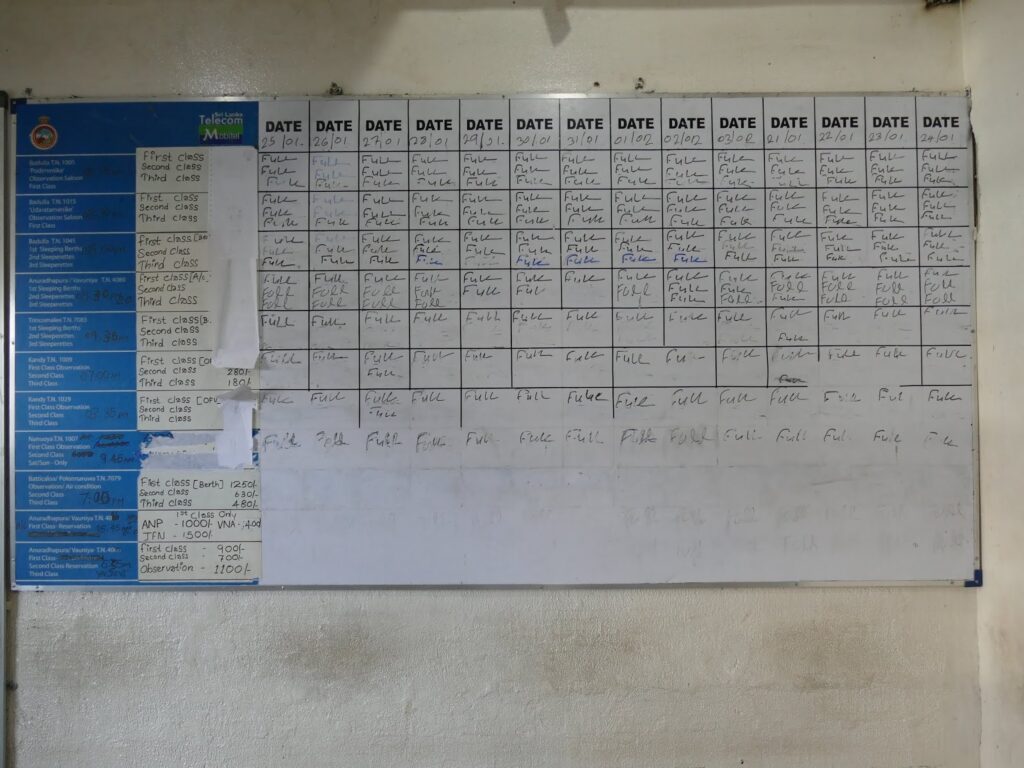
But actually, the best part was the train ride itself. It was like in the movies. I felt so out of place like hardly ever before. And I loved it, for it proved that the world is still not that globalized. That there are still particularities in people’s everyday life. Not everybody is wearing clothes by H&M and Uniqlo.
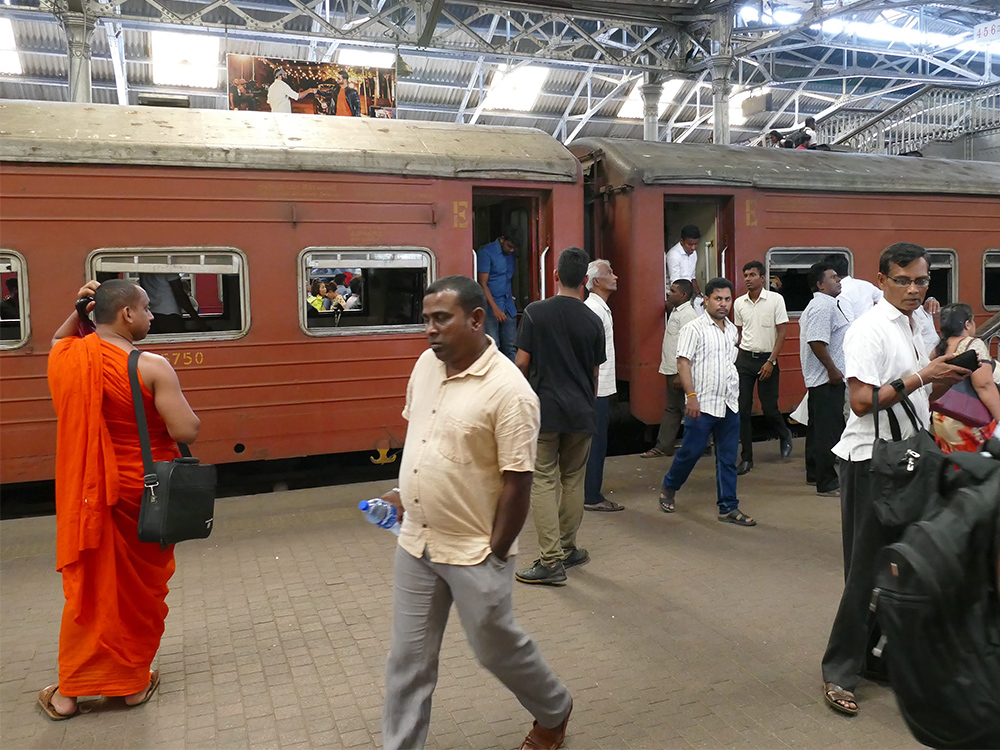
Train-ing for Sri Lanka
So in Colombo, I bought a ridiculously cheap train ticket.
Since I still had time, I inquired for another train ticket for the following week – which took forever. However, when I finally strolled towards my train – about half an hour before the scheduled departure – I found all the wagons full. Full in the sense of packed with people like your local subway at rush hour. Not only were all the seats taken, it was also difficult to find a place to stand.
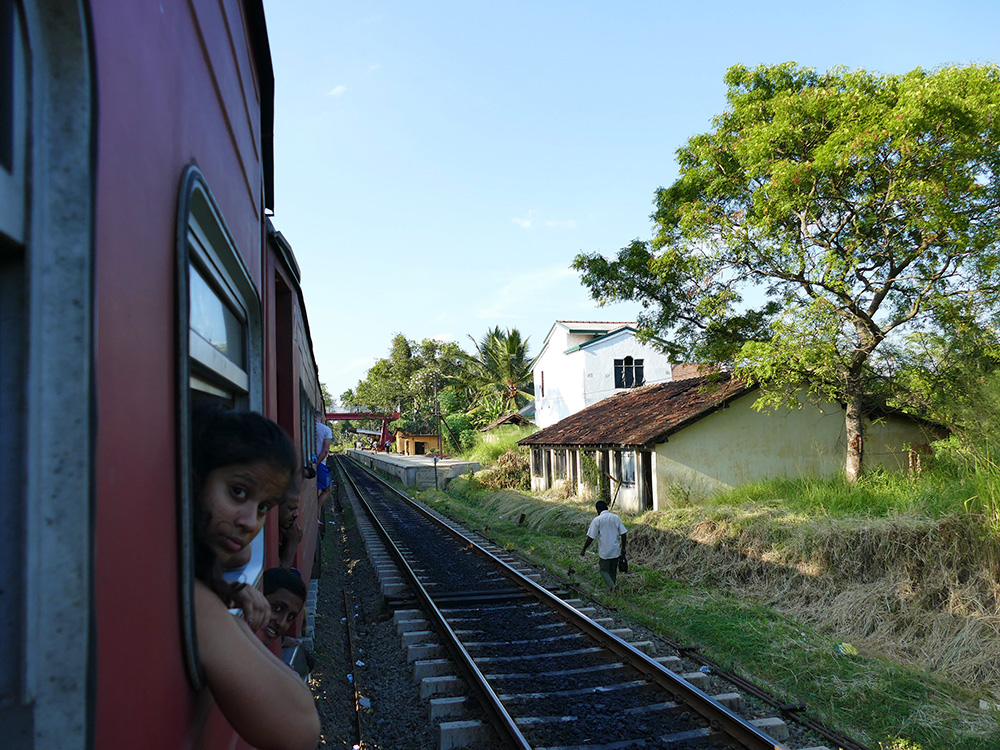
This moment I – firstly – congratulated myself officially for travelling with a hand luggage-sized suitcase. And – secondly – I understood that a train ride in Sri Lanka is nothing like those in Malaysia or Thailand, let alone in European countries. You don’t just sit down in your reserved seat, lean back and open your notebook, connecting it to the complimentary Wifi.
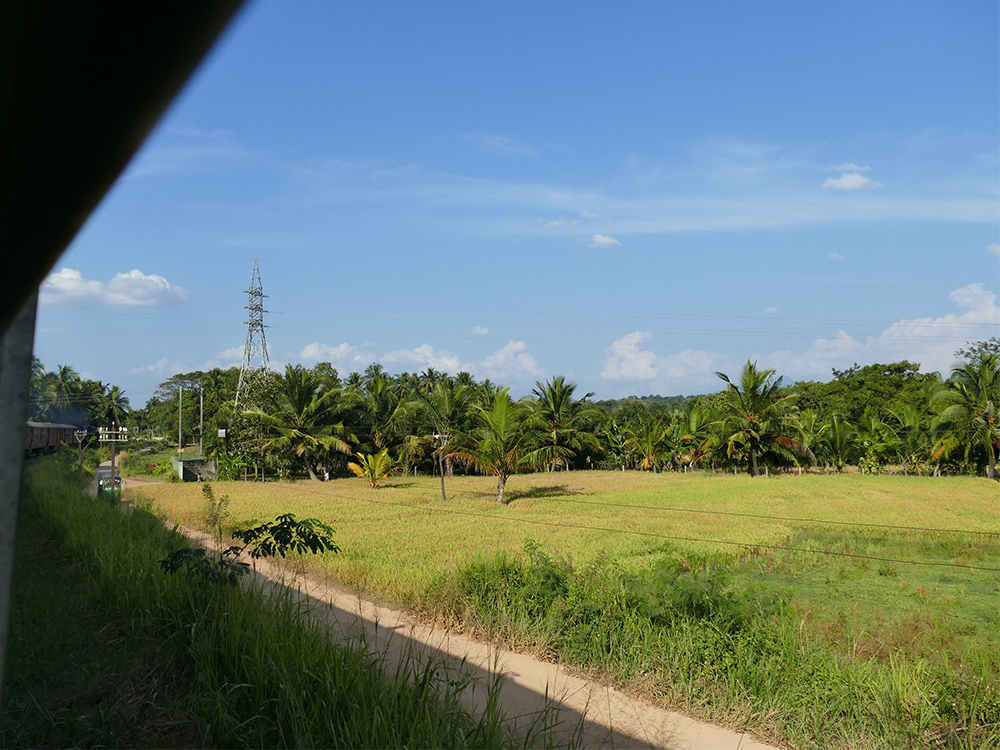
Already while I was a bit desperately searching for a seat, I saw tiny old ladies eating curry and rice from packs made of newspaper. Of course, they ate with their fingers. Eventually, they rinsed them with water they collected in the train’s bathroom sink. All the older people were dressed in traditional attires like sarongs for the gents and saris for the ladies.
No Class Mentality
I don’t know how I managed to find a free spot on a bench in third class. You think I’m cheap and bought a third-class ticket? No way, but what good is a second-class ticket when there are no seats available?
So third-class bench for me.
Which turned out to be just an amazing seat.
Super-uncomfortable, but what a spectacle before my eyes!
You know that they are always raving about these scenic train rides in Sri Lanka from Kandy to Ella?! Well, the truly scenic is not outside the train, the best scenes are happening inside.
Snacks
There are extended families squeezed on the benches, eating their homemade curries from paper bags or plastic bowls.
They don’t have to worry about replenishment: At every stop – and we had our share of stops alright – there are hawkers entering the train, squeezing themselves mercilessly through the crowds, yelling what their delicacies are. To make it a teeny bit easier for everybody, they balance the baskets and buckets on their heads. They have deliciously smelling little fritters. The aroma made me drool, however, I didn’t dare to buy them on my first day. But get ready, gut, your time will come.
Even an unspectacular fruit like an apple becomes an exotic delicacy as the hawker cuts it masterfully in small pieces and sprinkles chili and salt over the snack.
The extended family sitting to my left smiles at me curiously. Everybody in Sri Lanka smiles. Genuinely. Sri Lankans seem to be very nice people. And those to my left are extra-friendly and start to share all their homemade delicacies among those sitting within reach. They particularly enjoy feeding me since each piece of food comes with an exotic name and a short explanation. I’m accepting a tiny piece of everything they have to offer, balancing curiosity, politeness, and the fear of what these treats might do to my gut. It’s my very first day, after all.
Travel Entertainment
So we sit and eat and have it good and the kids are squeaking every time the train sets off with a heavy bounce and keeps rocking from side to side. I know this kind of wild ride exclusively from fairgrounds where it’s over after about five minutes. Not here, Sri Lankans are very generous when it comes to excitement.
In the dark tunnels, the kids are feigning fear which gives them a valid reason for screaming like crazy.
To them, it’s all a big adventure.
To me, too!
ANURADHAPURA
I chose Anuradhapura as my first stop for my Sri Lanka trip.
Anuradhapura is one of the ancient capitals of Sri Lanka, the third one, to be precise, following Tambapanni and Vijithapuraand.
Anuradhapura is famous for its ruins of an ancient Sri Lankan civilization and also home to the sacred bodhi tree. It is actually one of the oldest continuously inhabited cities in the world, has been the center of Theravada Buddhism for centuries, and made it to the Unesco World Heritage List in 1982.

So if you can’t get enough of large groups of faithful worshipping at impressive temples, if you enjoy cycling around a huge lake and between rice paddies to really arrive in Sri Lanka, Anuradhapura is certainly a good option.
However, it is located about 200km /125 miles north of Colombo so getting there takes about four hours by train or bus. Therefore it is not surprising that – despite Anuradhapura’s important role for Sri Lankans and Buddhists worldwide – there are not so many tourists. This allowed me to smoothly glide into the…groove.
This was also the reason for booking me into an average hotel – one of these places that are basically the same everywhere in the world. It is located right on the banks of lake Thissa Wewa which is also a convenient spot for visiting the Sacred City.
By the way, there are two railway stations in Anuradhapura, New Town and Anuradhapura, so you better check according to your accommodation which one is more convenient for you.
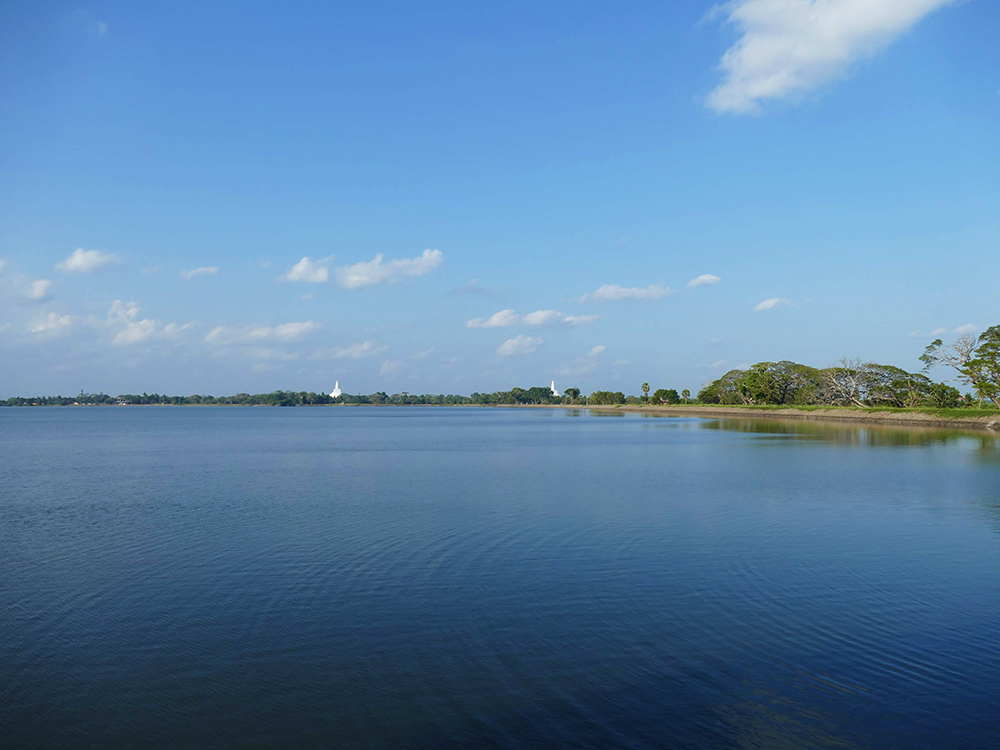
Let’s Go
Guiding you to the places I’ve visited, we’ll be going from south of lake Thissa Wewa northwards. I strongly recommend you take a printed map with you or use the map I’m including: I’d lost my way at some point and was cruising forever in the noonish heat. People I asked were friendly – but unfortunately not really helpful; probably I didn’t make very clear what I was actually looking for. A major problem was also that I have no sense of orientation – and GPS informed me that I was somewhere within a radius of five miles from the place I was looking for. It was pathetic….and very, very hot.
Vessagiriya
Anyway, the first site to visit is Vessagiriya, an ancient Buddhist forest monastery.
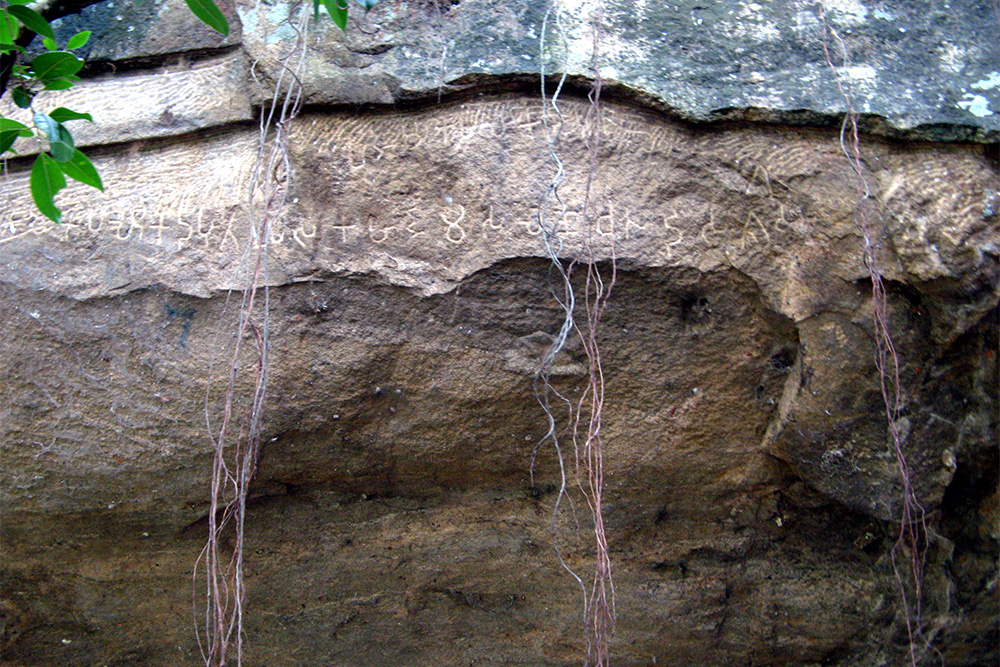
(Photo: Michael Gunther, Drip Ledge, Vessagiri 080, cropped to 2:3, , CC BY-SA 4.0)
It was home to about five hundred monks who lived in rock shelters. Although today, only the stone structures remained, wood and other materials were used for the structures, too.
Isurumuniya Rajamaha Viharaya
Not far from Vessagiriya on the left side of the A28 road is the Buddhist temple Isurumuniya Rajamaha Viharaya.

At this temple, make sure not to miss the carvings Isurumuniya Lovers, Elephant Pond, and The Royal Family at the small exhibition hall.
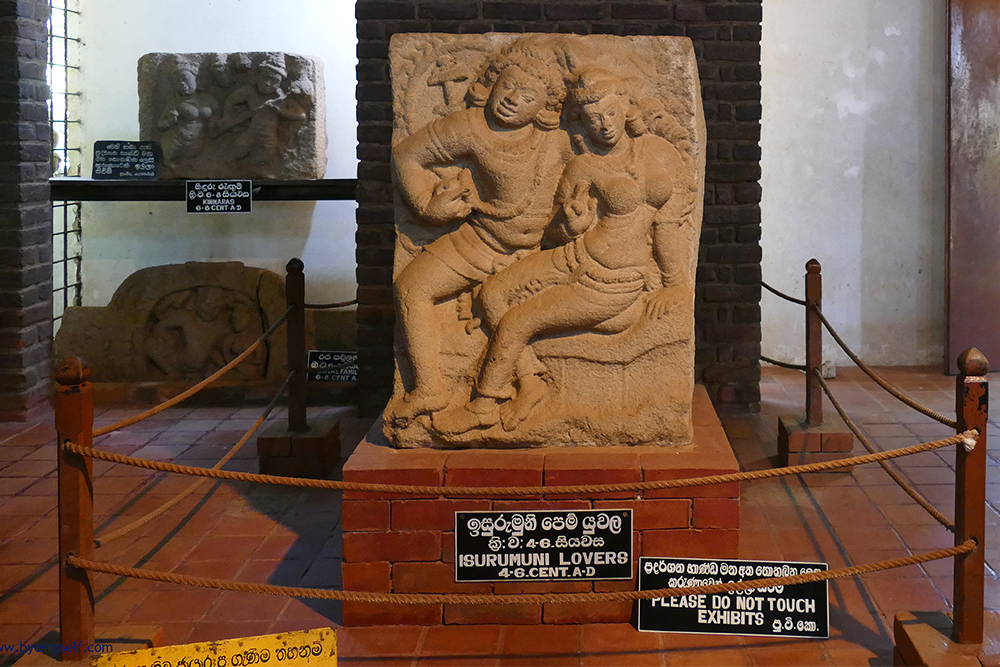
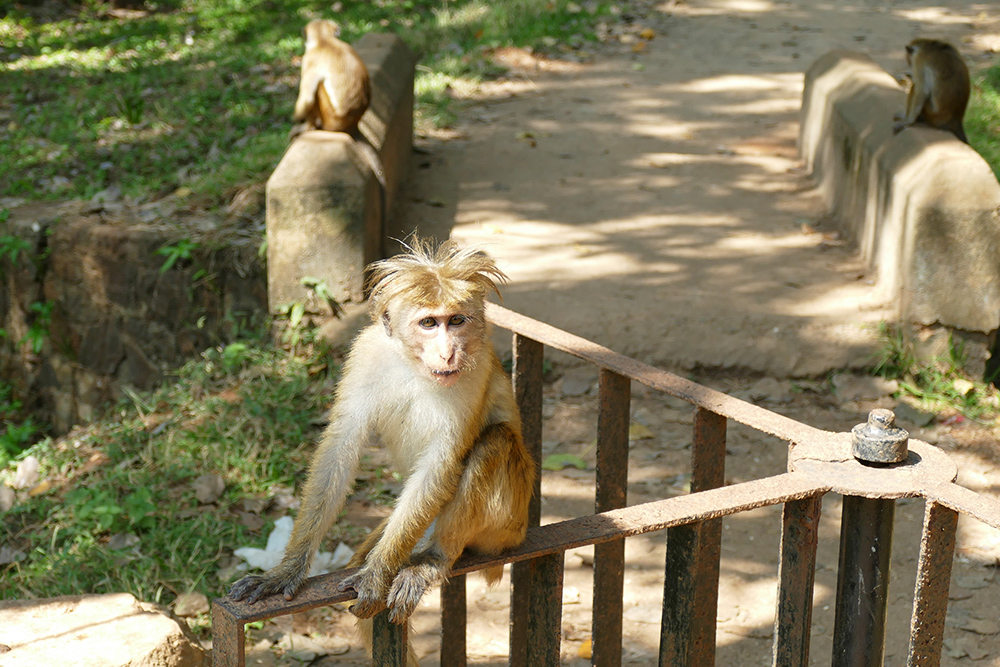
Note: Before entering these premises, you need to take off your shoes, take off any head covering. Your knees and shoulders must be completely covered. This applies not only to the ladies, but to the gentlemen just the same.
Make also sure that the fabric is not transparent. I’ve seen ladies being denied entrance because the shape of their legs was visible through the fabric of their sarong.
These rules apply to each and every religious, sacred Buddhist place in Sri Lanka.
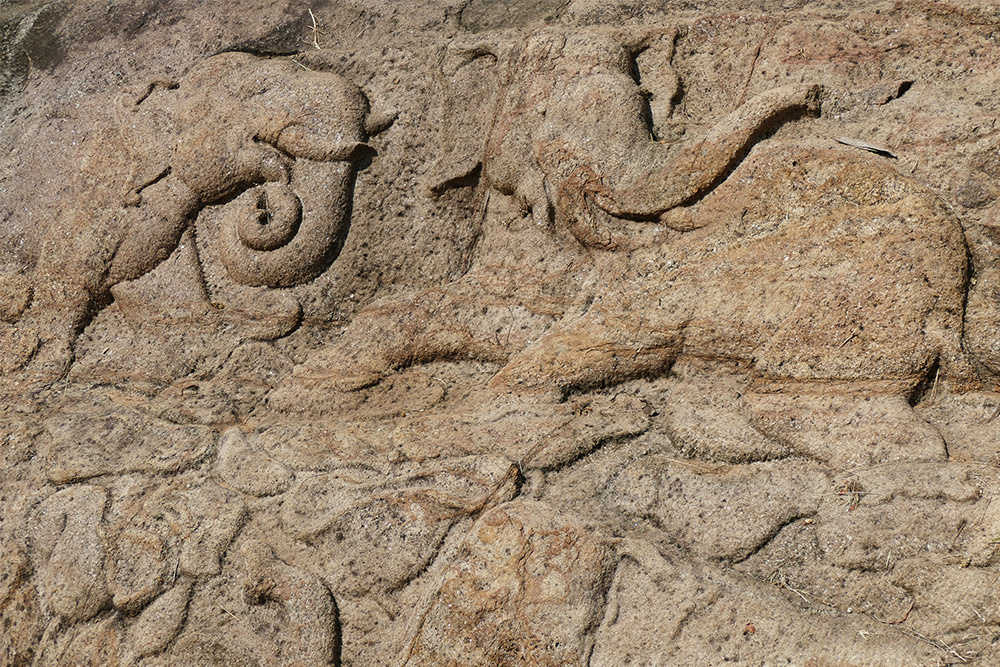
Before you move on, just walk across the parking lot and pay the Ranmasu Uyana, the Royal gardens, an exquisite example of Ceylonese garden architecture from the pre-Christian era.
Sri Sarananda Maha Pirivena
As you keep going up north, northeast, to be precise, you’ll see the Sri Sarananda Maha Pirivena temple to your right. I’m positive that you won’t miss the Buddha statue – it’s huge!
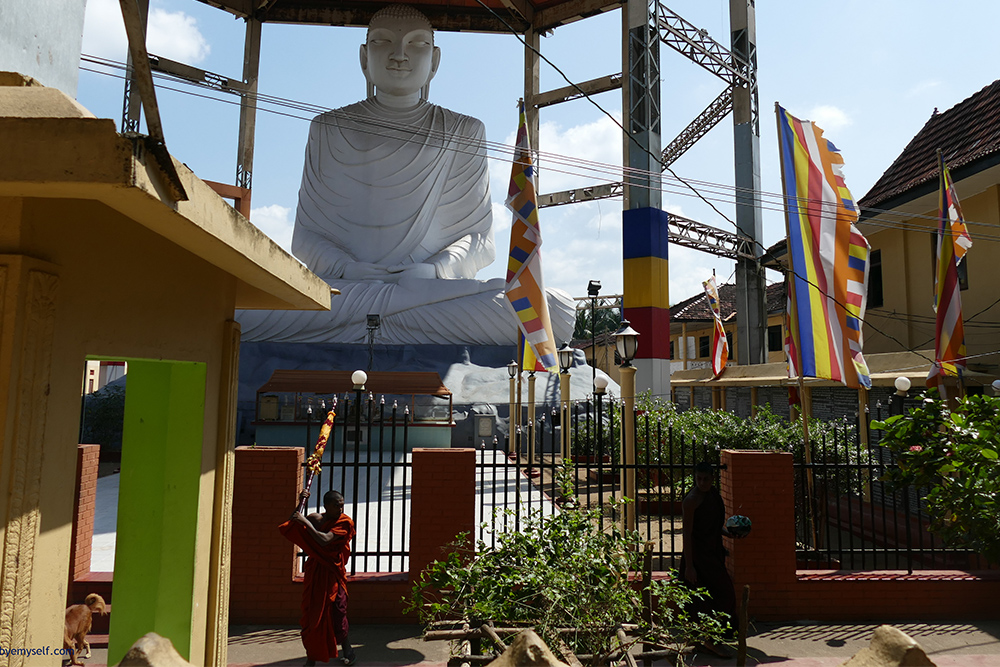
Passing the Kurunegala Junction, you’ll see remains of the Dakkhina Stupa to your left. It is a brick stupa that’s said to be Chola Tamil King’s Ellalan grave.
Not very spectacular.
Bhodhiya Complex
But then you’ll get to the most important site, the Wel Bhodhiya complex.
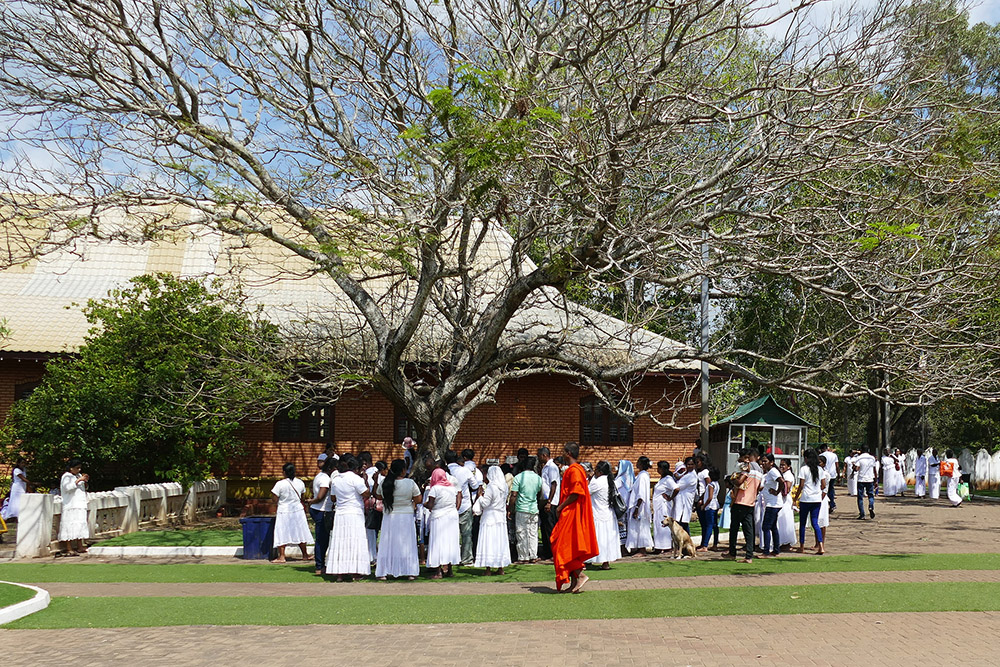
The Bodhi Tree was a large fig tree located in Bodh Gaya in India. Planted in 288 BC, it is the oldest living human-planted tree in the world; and none less than Mr. Siddhartha Gautama, aka Buddha, attained enlightenment under this special plant. The Bodhi Tree is often depicted with heart-shaped leaves.
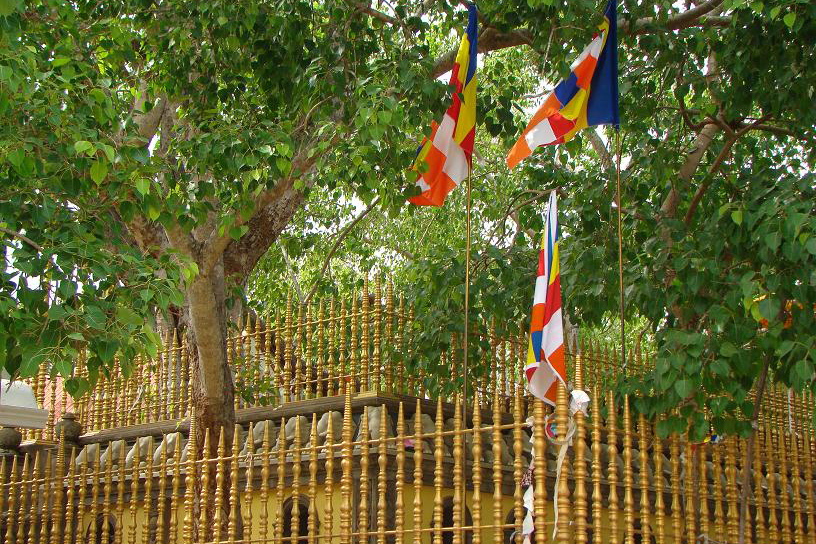
(Photo: බිඟුවා, SriMahaBodiyaRanVeta, cropped to 2:3, , CC BY-SA 3.0)
From this impressive sacred complex, you can go west towards the Basawakkulama Tank reservoir where you can visit two exhibitions at the Archeological and the Folk Museum.
Ruwanwelisaya Dagaba
Behind the museums, you’ll spot an impressive Stupa, painted in a cool bluish-white. Built by King Dutugemunu 140 BC, it is 103 meters / 338 feet high and a sacred Buddhist site, which means shoes and hats off, knees and shoulders covered.

Tip: It’s no biggy walking around barefoot in a temple. But circling an outdoor stupa in the noonish heat can be very unpleasant. Fortunately, there is nothing wrong with wearing socks. I took a pair with knobs to avoid slipping on the large, shiny stones.
It was after visiting this Stupa that I lost my way and cycled in circles. Actually, to this day I don’t have a clue where I had been.
Finally, my sedulous inquiries led me back on track, namely to the
Abayagiri Complex
Abayagiri Vihara was a monastery site and today, it is one of the most extensive ruins in the world as well as one of the most sacred Buddhist pilgrimage cities. Hence, it is a partly archeological, partly sacred complex and covers an area of 200 hectares.

Obviously, the huge Abayagiri Dagaba – 72 meters / 235 feet high and with a diameter of 95 meters/ 310 feet – is the most impressive structure on the premises.
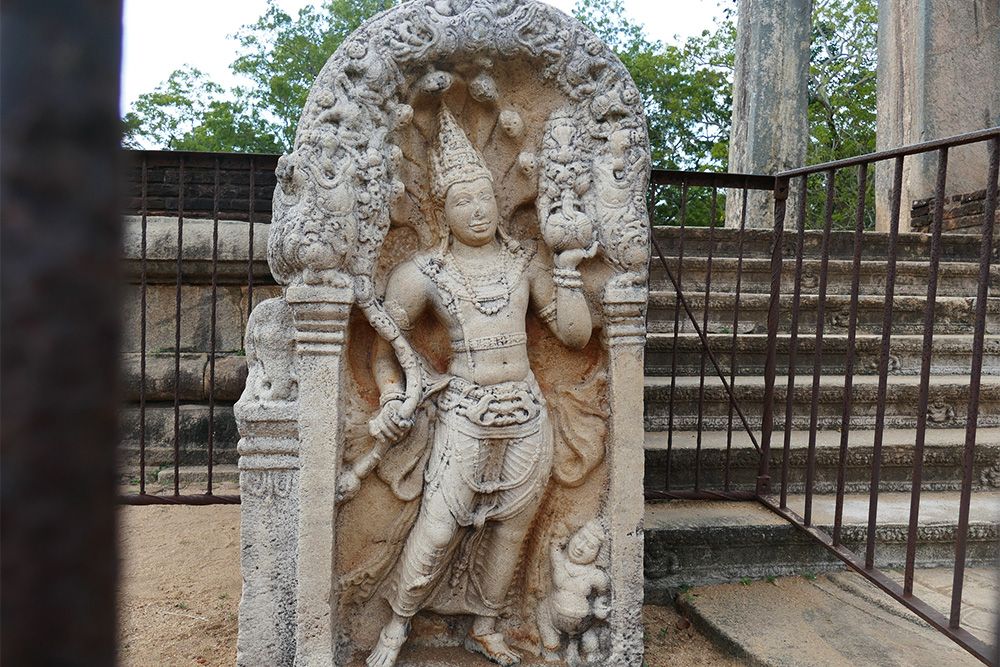
However, there are still remnants of the Rathna Prasada, the Jewel Palace. The most impressive one is, of course, the fantastically preserved guard stone.
Image House of Pancavasa
Across the dusty road, where you’ll find some stands selling snacks and souvenirs, the is Image House of Pancavasa Building where you can admire one of the two exquisite moonstones.
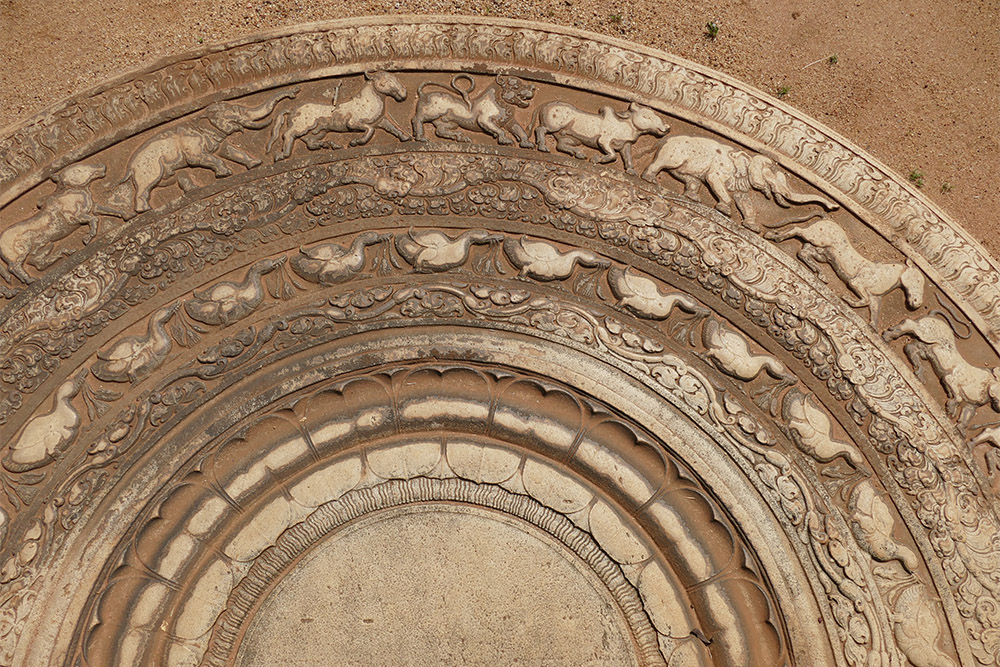
The half lotus at the center of this basically very posh doormat is enclosed by several concentric bands. A procession of swans is a symbol of life force. The following elephants, lions, horses, and bulls depict the stages of life: Birth, decay, disease, and death. The flame motif at the utmost ring symbolizes worldly desires.
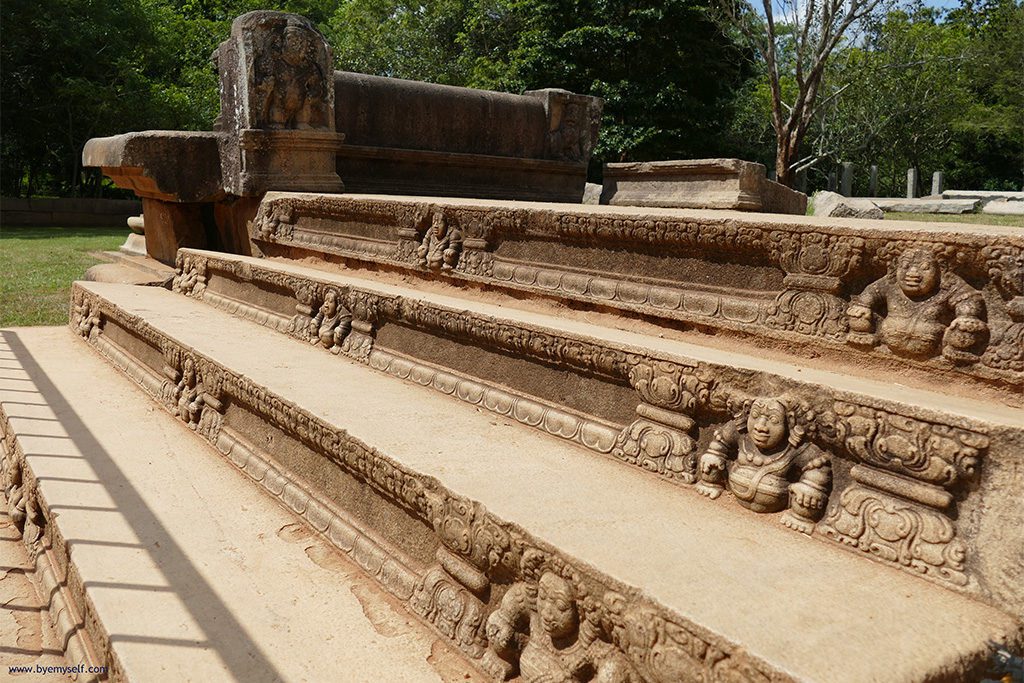
There are also ponds – like the elephant pond and a twin pond – and most importantly 2,5 meter/ 8 feet high Samadhi Buddha Statue carved from granite. The Buddha is depicted in the cross-legged position of the Dhyana Mudra.
I must admit, that was it for me.
It had been my first day. I was confused. I got tired.
I cycled to the city center. This, by the way, looks nothing like a city center to us, something I also had to get used to in the beginning. There, I bought lots of soda and water and slowly cycled back to my hotel.
However, if you are fit enough, you can visit many more ruins and Dagabas.
Maybe you don’t want to cycle but going by tuk-tuk which is easy since every driver in Anuradhapura is waiting for this opportunity.
Good to Know Before You Go
Before I move on to the next fascinating place, I have to inform you that the important archeological sites in Sri Lanka are not free – in Anuradhapura, you have to pay 25 US$ respectively the equivalent in LKR.
I got a press ticket from the Tourist Bureau – and didn’t have to show it anywhere. I know from people that they gave the money to their tuk-tuk driver, who took them to the places, but they never actually saw their ticket.
However, I saw a checkpoint, but they didn’t bother to check my ticket; so I don’t know. Anyway, in general, you have to pay 25 bucks if you want to visit the archeological sites.
MIHINTALE
Mihintale is only 15 km east of Anuradhapura so it can be visited on a half-day tour. And visiting Mihintale is totally worth it since it is one of the holy places of Sinhalese Buddhism. Here, Buddhist monk Mahinda met with King Devanampiyatissa. Hence, it is supposedly the cradle of Buddhism in Sri Lanka.
To get to the plateau, you have to climb 1840 stairs, which is not hard at all since there are a couple of archeological sites on the way where you will probably stop.
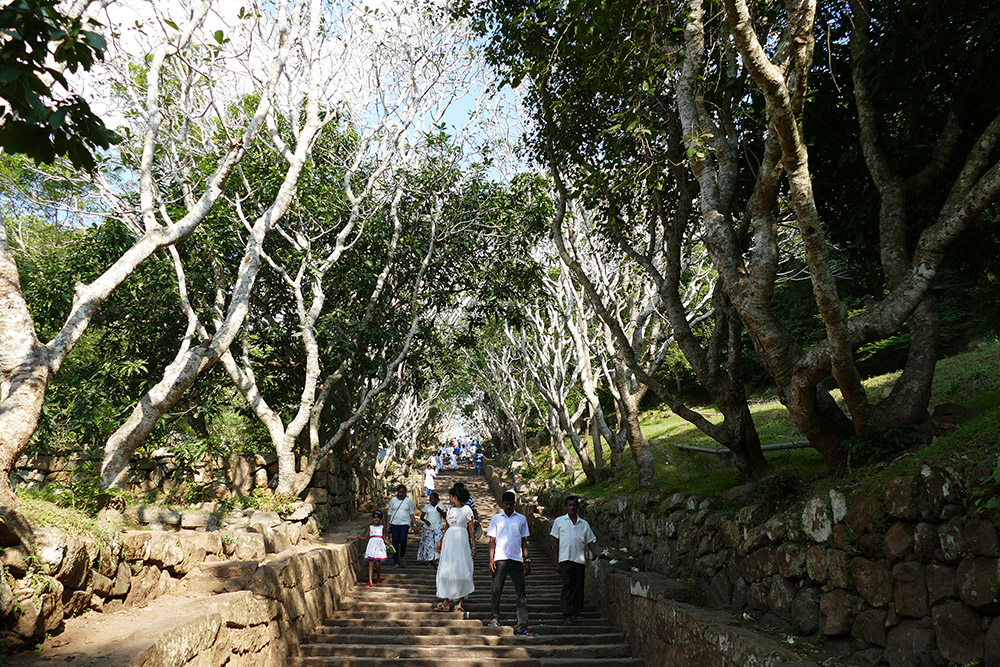
Before you climb the last bit, you have to take off your shoes, cover….you know the drill.
As you enter the plateau, an enormous Buddha statue will impress you. This also can only be reached over – yet another – flight of rock-carved steps. Be a bit careful, especially if the stairs are wet.
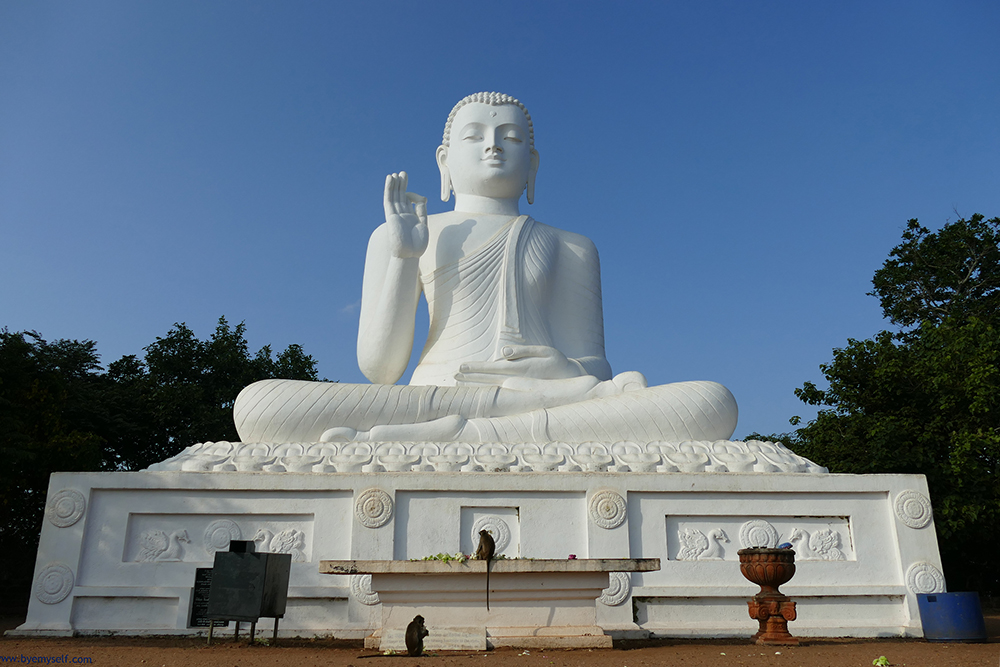
From here, you have a grand view of the most important structure, the
Aradhana Gala
This is where Mr. Mahinda landed and this is where every pilgrim – and any other visitor – is going. Everyone but me, since I’m afraid of heights. Also, these steps are just carved into the rock which makes them even scarier. Also, there is just a flimsy railing that I didn’t trust.
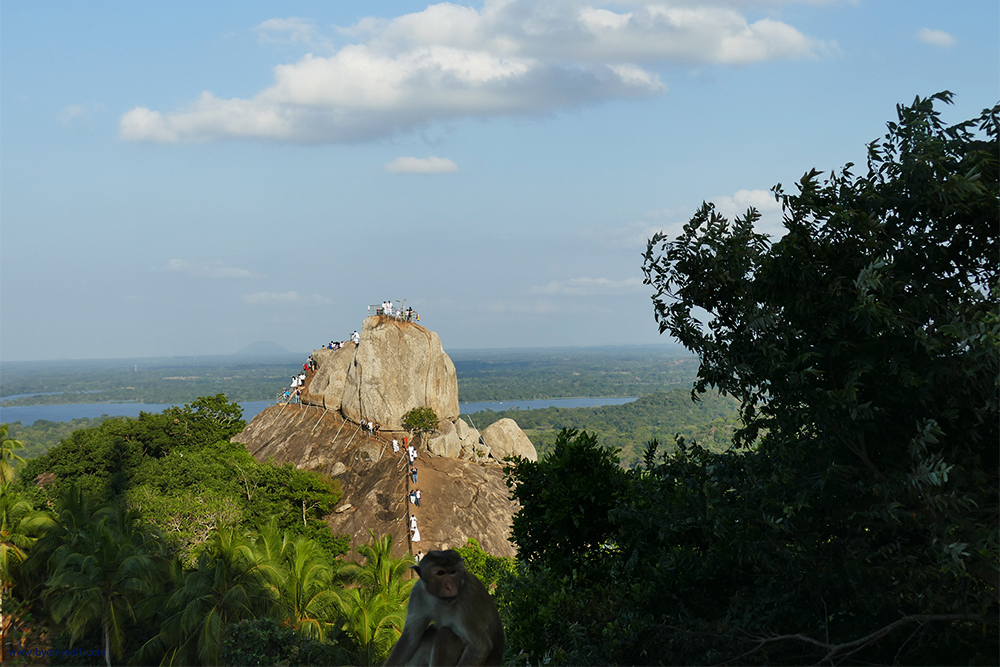
The best thing about high rocks is that they look far more impressive when you do not stand on them, so here is my picture:
Maha Stupa
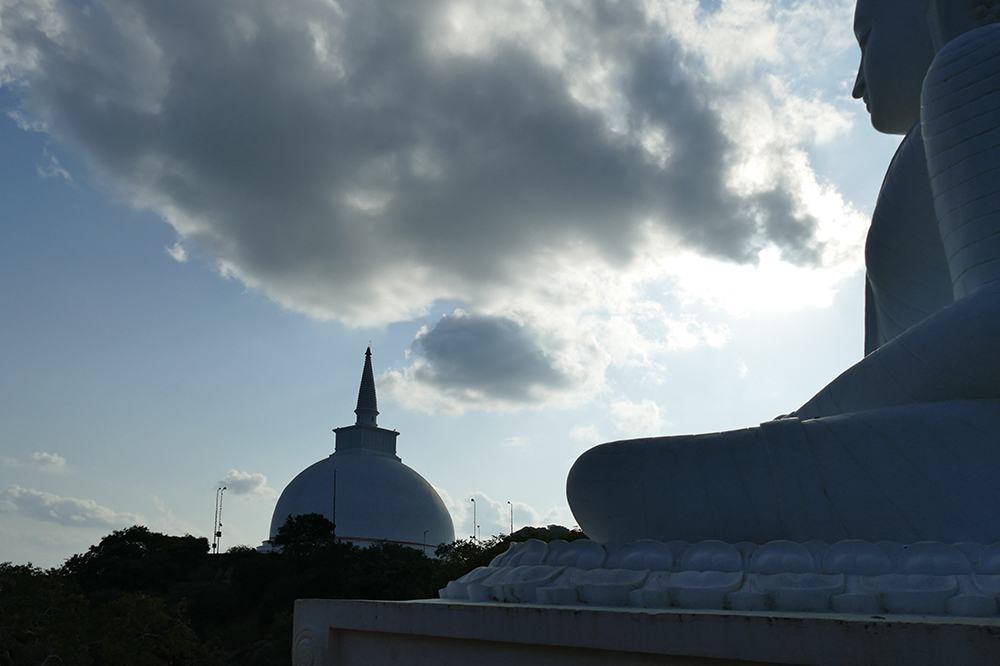
What I did climb, despite the steps carved….you know, was the large stupa on the summit of the Mihintale hill.
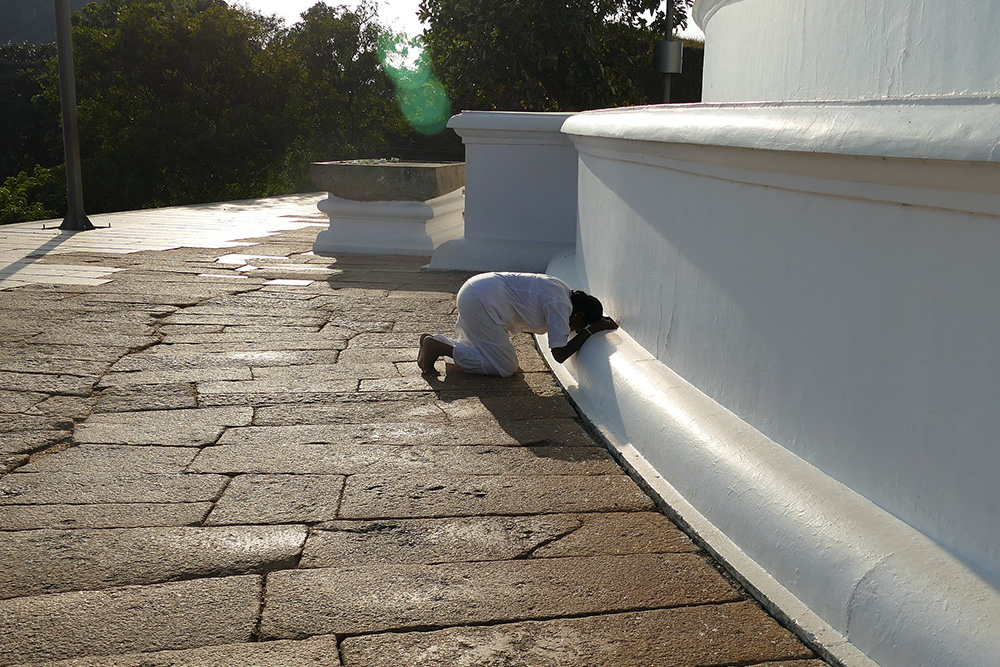
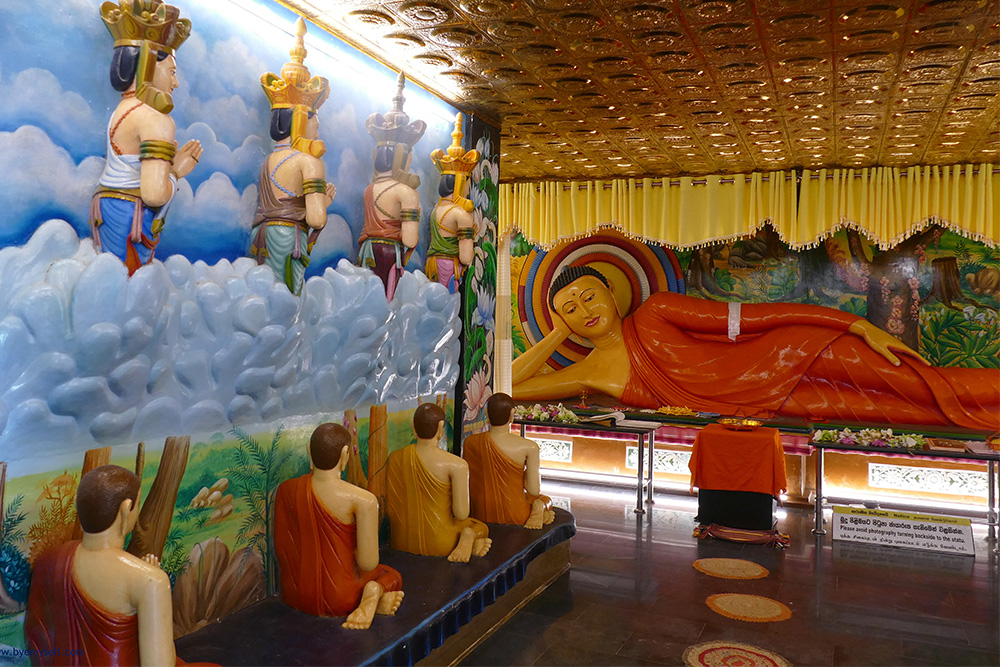
Ambasthala Dagaba
This is a small stupa surrounded by stone pillars. Presumably, it’s the spot where the meeting between the two great men took place. The Dagaba enshrines the Mahinda’s relics.
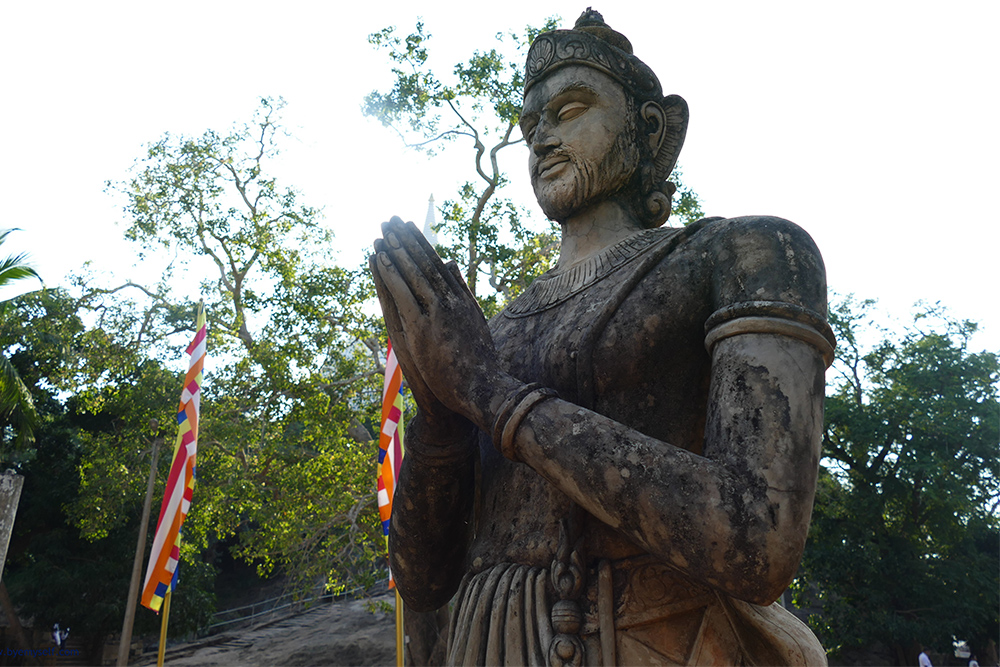
After you pick up your shoes, you can take a short detour to see the
Kaludiya Pokuna
which is one of the famous ponds at Mihintale. Kalu means black and diya water and they named the pond Kaludiya because the water appears black.
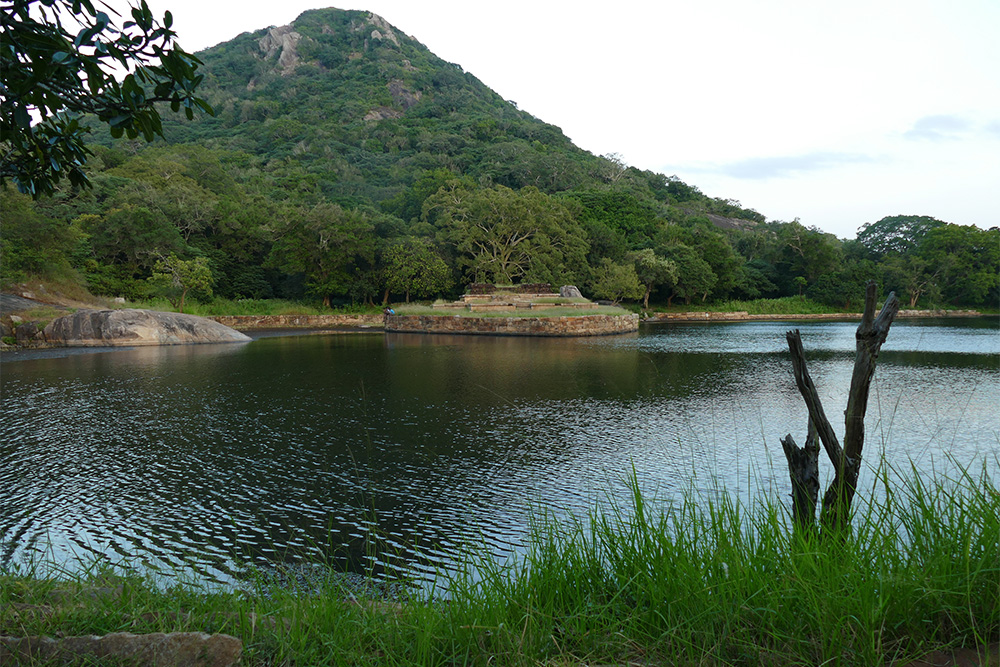
The entrance fee to the main plateau is 500 LKR. The tuk-tuk driver charged 2000 LKR for a trip that took in total about four to five hours.

Practical Information
How to Get There
To get to Anuradhapura from Colombo, you can either take a train or a public bus. Also, there are taxis offering this tour. They charge about 60 US$, which seems outrageous at first, but we are talking about a distance of 200 kilometers. Especially if you are three to four people, this might be a very comfortable option. In this case, you should pre-book your shuttle online.
However, the train ride was an incredibly folkloric and inspiring adventure that I would want to miss.
It’s, obviously, also dirt cheap – about 2 US$.
How to Get Around
The roads of Anuradhapura are not very busy so cycling is a valid option. I love the fact that you can stop everywhere you like to enjoy a spot or take some pictures.
However, it is hot and humid and the bikes might not be a bit hard to ride. Of course, you can always charter a tuk-tuk for the day.
A tuk-tuk just to Mihintale and back will cost you about twelve bucks.
Where to sleep
As I stated above, this Heritage Hotel is good, clean, and comfortable, but definitely nothing special. I must say that nothing special was just fine for the first three nights. There was much special to come, so this standard place allowed me to adapt smoothly.
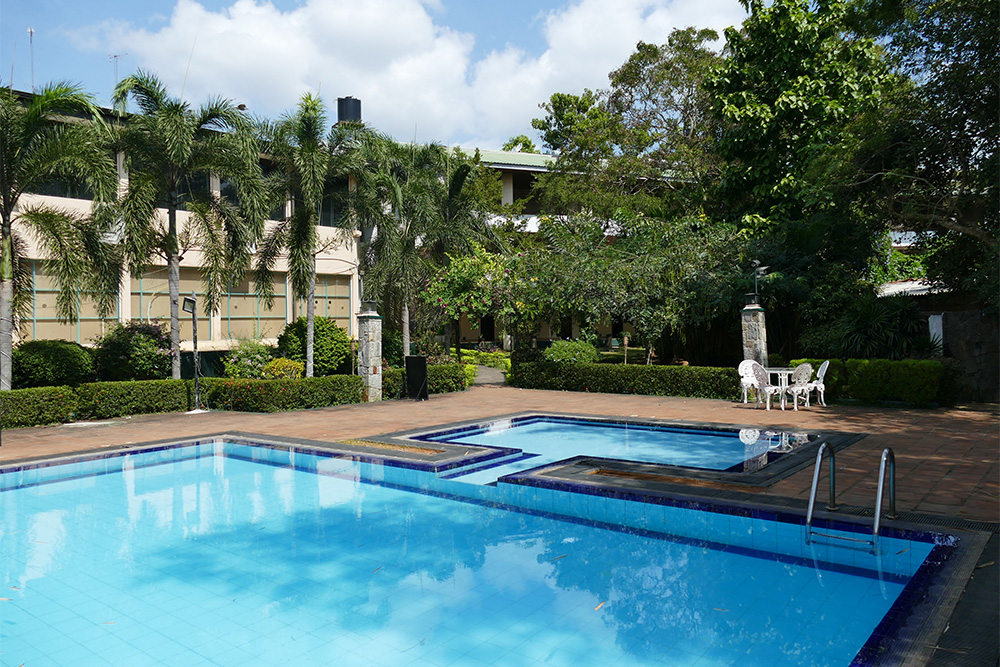
The only thing that put me off was the price they charged for the bike. 1000 LKR per day is triple what everyone else charges. Since they are located on the outskirts, you hardly have another chance than paying their ridiculous price.
Get more details, check out availability, and the Heritage Hotel’s rates here. *
If you are searching for other convenient lodging options, you can do so on this map*:
Booking.comWhere to eat
I’m one of these people who actually lose weight on their travels: It’s hot, I’m racing from place to place, water bottle in hand so that I do not dehydrate. But food? When? And why?
Usually, I’m having a good breakfast and then again an early dinner – before I crash.
Therefore, in Anuradhapura, I had all my meals at the hotel; which was totally fine. They had a huge breakfast buffet with many choices – from rather British to really Sri Lankan: string hoppers with different – hot! – curries.
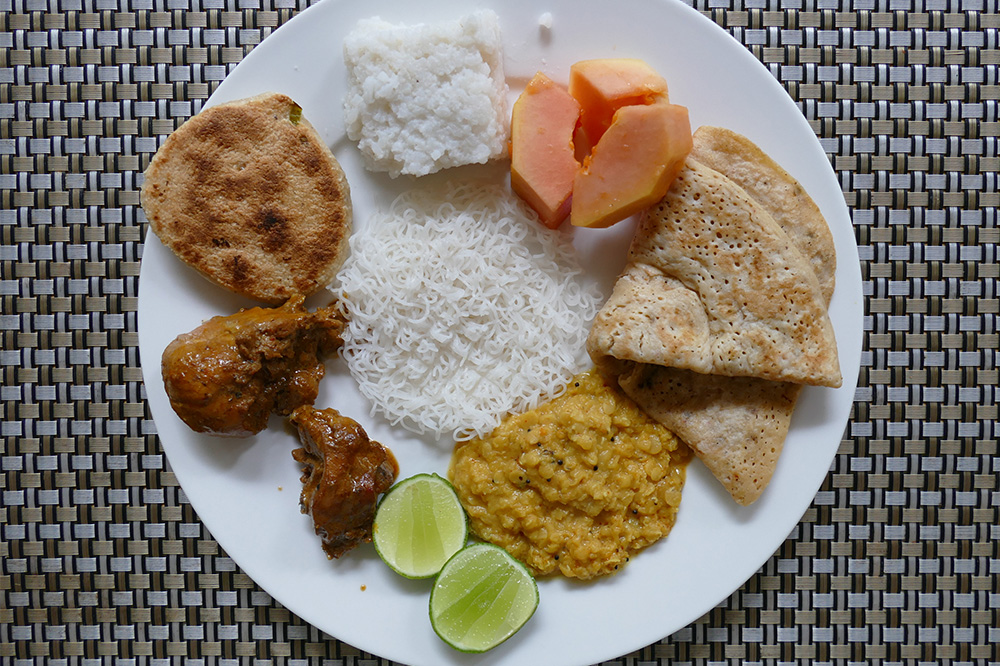
And surprisingly, their dinner options – whether from the all-you-can-eat buffet or à la carte – were good, very tasty, i.e. not adapted to our tongues of wimps, and reasonably priced.
So if you stay here, you can as well eat here.
What to See
I’m an avid solo-travelling woman. Since solo-travel doesn’t equal solitude, I love to join organized tours here and there. They allow me to meet fellow travellers – for just a short moment or a lifelong friendship.
Therefore, here are some great ideas of what to do and which tours to join during your stay in Sri Lanka*:
Map
On this map, you’ll find all the wonderful places I’m introducing in this post.
Clicking on the slider symbol at the top left or the full-screen icon at the top right will display the whole map including the legend.
Do you want to read about all the other beautiful places I’ve visited in Sri Lanka? Then go to the main post and take your pick! There you’ll also find valuable general information that will make your trip smoother.
Pinnable Pictures
If you choose to pin this post, please use one of these pictures:
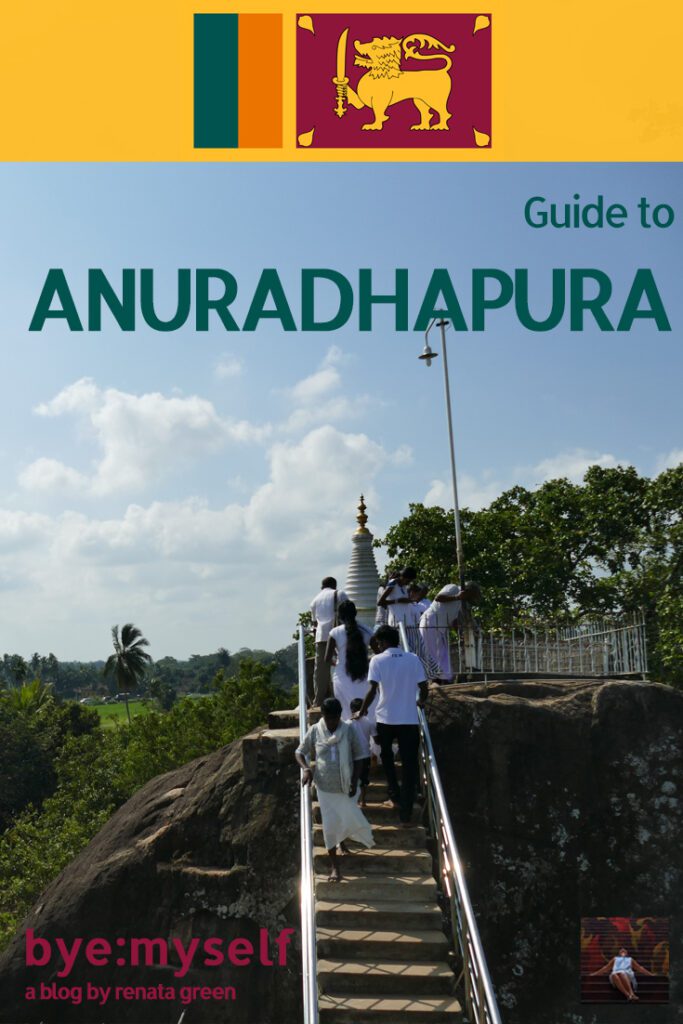
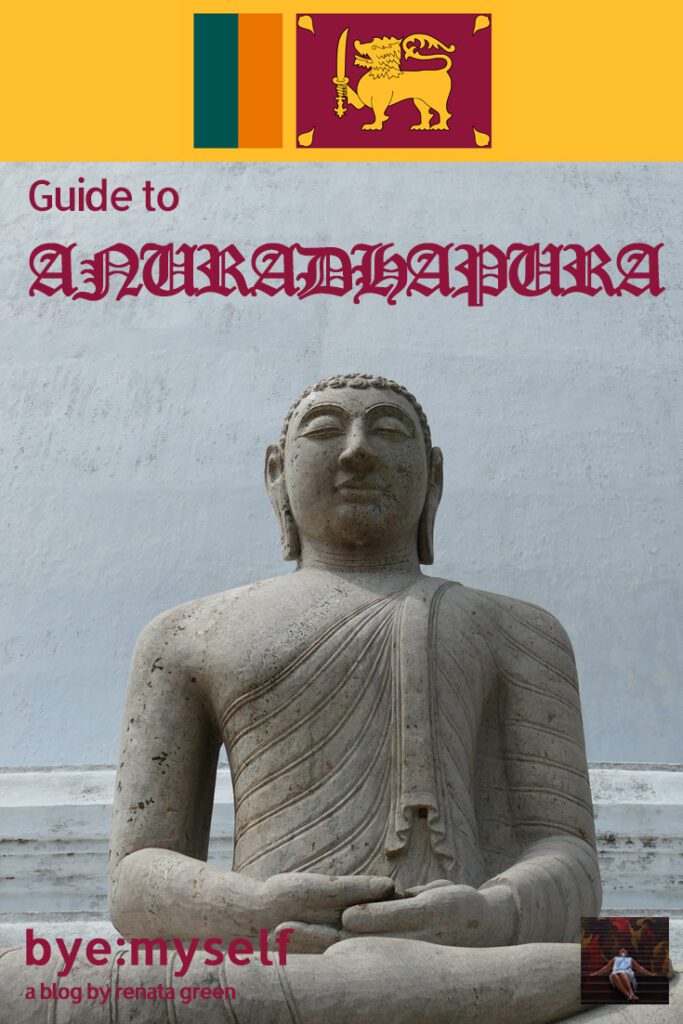
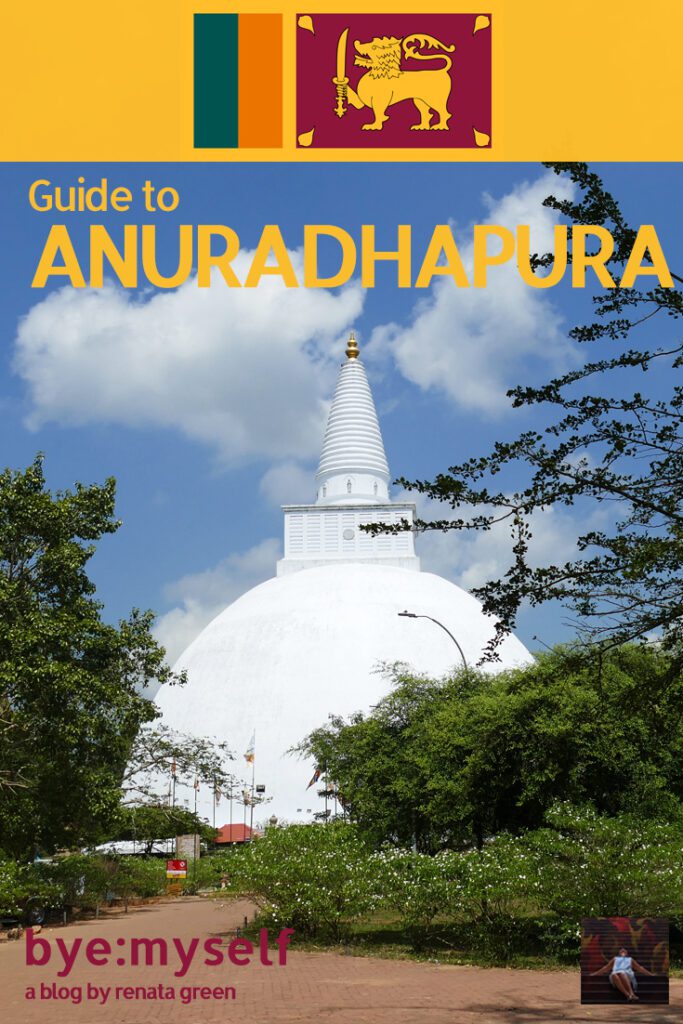
Note: I’m completing, editing, and updating this post regularly – last in January 2023.
Did You Enjoy This Post? Then You Might Like Also These:
Guide to the Most Amazing Places in SRI LANKA
Guide to SIGIRIYA and a day trip to DAMBULLA
Travelling by Bus Around the World or Ride with the Devil
i am not a dark tourist, the world is a somber place
Guide to GALLE – one of Sri Lanka’s Highlights
Guide to UDAWALAWE – on a Peaceful Safari
Guide to ANURADHAPURA and MIHINTALE
Guide to KANDY and a Temple Hike from Embekke to Pilimathalawa
Disclaimer: I appreciate that Sri Lanka Tourism Promotion Bureau is supporting my blogger trip by supplying me with tickets to some of the main landmarks. However, all opinions on these services are mine and weren’t by any means influenced by my cooperation partner.
* This is an affiliate link. If you book through this page, not only do you get the best deal. I also get a small commission that helps me run this blog. Thank you so much for supporting me!
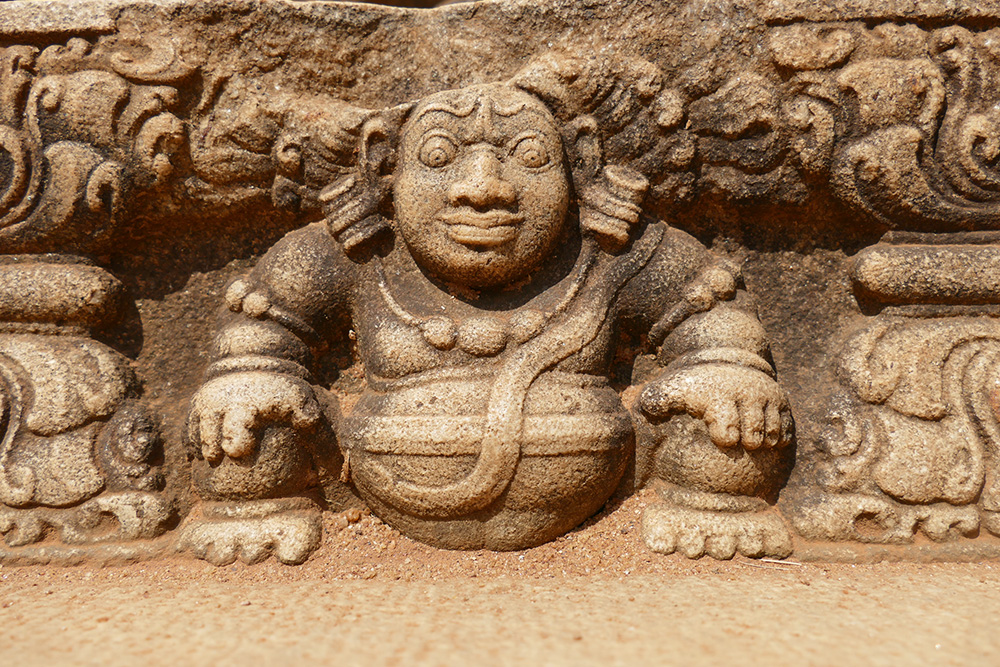
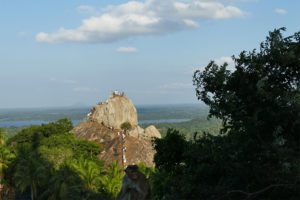
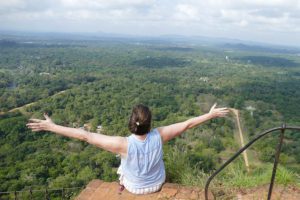
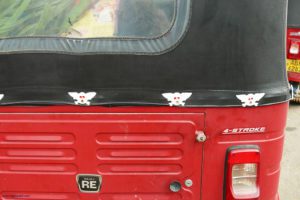
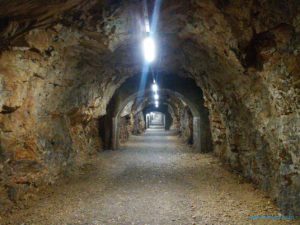
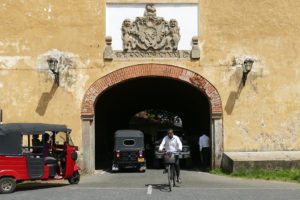
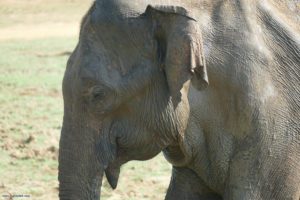
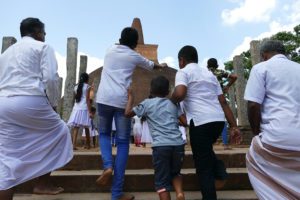
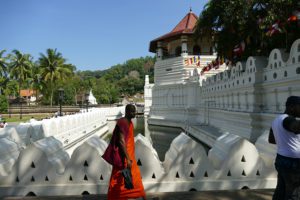
I have never been to Sri Lanka…fascinating Bodhi Tree, monkeys, and lovers.
I definitely love the fact that there aren’t many tourists here! 5 hours is a lot by train, but I feel like riding the train in Sri Lanka is an iconic part of the travel experience anyway. Also, the food you showed as a Sri Lankan breakfast looks really good! My boyfriend spent a month there and his only complaint is about the food. But I think it looks pretty good, so I’m a bit more keen on visiting now sooner than later
I love your description of the train ride! It felt more real and like I was actually there with you, overall this was a very detailed post and I really enjoyed learning more about Anuradhapura!
wow what a great post, thank you for including ao much detail. I’ll definitely be interested in heading here and seeing this scenery and the temples.
I think it’s a bit less visited hence great once you have enough of the travellers crowds 😉
Sri Lanka is a spot we have yet to visit. So it was interesting to get this insight into Anuradhapura. So great to have friends who knew the area so you could explore this spot off the normal tourist track. The train ride along looked like a fascinating adventure with life just going on around you. So interesting to see that Bodhi Tree and know it was the oldest human planted tree in the world. So great to be able to visit the religious sites without big tourist crowds.